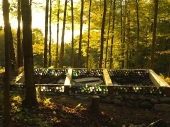
 1
1





Idle dreamer








Idle dreamer








Idle dreamer
 1
1




 1
1




Idle dreamer








 1
1












Idle dreamer
 1
1




Idle dreamer




It's time to get positive about negative thinking  -Art Donnelly
-Art Donnelly








Idle dreamer
 1
1




John Daley Bendigo, Australia The Enemy of progress is the hope of a perfect plan
Benefits of rainfall collection https://permies.com/t/88043/benefits-rainfall-collection
GOOD DEBT/ BAD DEBT https://permies.com/t/179218/mortgages-good-debt-bad-debt




Nick & Jane
You are most welcome to visit our blog at ALEKOVO.COM.

| I agree. Here's the link: http://stoves2.com |









